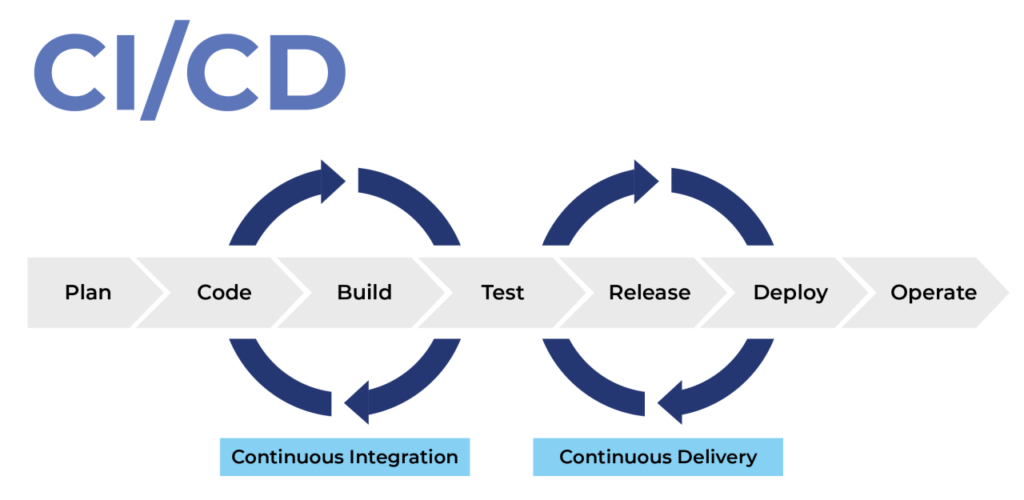A need has arisen in the world of software development to deliver high-quality software quickly so as not to be left behind. Continuous Integration/Continuous Deployment (CI/CD) was created as a means of streamlining software release management and making it more efficient. This allows teams to make frequent code changes that will be delivered reliably. In this blog post, we will cover CI/CD testing – what it is, why it’s important, its benefits as well as some of the best practices when implementing it.
What is CI/CD Testing?
CI/CD represents a development practice where code modifications are automatically built, tested, and deployed into production environments. It is a series of actions that code changes go through in order for them to become executable software. These pipelines automate everything from checking in codes to deploying them into live servers thus making sure that all modifications made on programs are well-tested and smoothly integrated with existing codes.
In this process, CI/CD Testing takes center stage by including testing activities at each step within the pipeline itself; hence every line gets put under intense scrutiny for bugs, performance regressions, or compatibility issues during the early stages of the software life cycle development thereby significantly reducing chances of flawed components reaching production.
Significance of CI/CD Testing:
Timely Detection of Errors: Integrating testing into the CI/CD pipeline helps catch and fix bugs early on, reducing the cost and effort required to address them later in development.
Quicker Time-to-Market: With CI/CD, software changes can be iterated and deployed rapidly so that organizations are able to deliver new features or updates to users more frequently than their rivals.
Better Code Quality: Continuous testing makes sure that code changes satisfy quality standards and follow coding best practices leading to a more stable and dependable software system.
More Collaboration: By fostering collaboration between development, testing, and operations teams; CI/CD ensures smooth communication as well as goal alignment across all stages of software delivery.
CI/CD Testing Best Practices:
Automated Testing: At every stage of the pipeline, automatically check the code alterations using different kinds of tests such as integration tests, end-to-end tests, and unit tests.
Parallel Testing: Use parallel testing to concurrently run the same test multiple times so as to reduce test execution duration and hence get faster feedback for accelerated software delivery.
Test Environment Management: Keep consistent and reproducible environments for running tests. This ensures that they are done under controlled conditions whereby environmental factors affect results minimally if any at all.
Continuous Monitoring: Establish real-time tracking systems that monitor the health and performance of CI/CD pipelines. It should also be able to identify failures or bottlenecks with immediate effect for prompt intervention leading to resolution.
Feedback Loop: Create a feedback channel through which information is collected from testing activities and then fed back into development processes thus fostering constant enhancement as well as optimization in testing methods.
Security Testing: Merge security checks with the CI/CD pipeline. This will help expose early on any weaknesses within an application during its development phase while ensuring that it becomes strong enough to withstand cyber threats.
Conclusion:
CI/CD testing is the key to contemporary software development because it helps companies save time and money. By integrating CI/CD tests into their workflow, businesses can deliver high-quality software faster while minimizing risks and ensuring reliability.Additionally, this approach allows for more efficient collaboration between team members who may not be physically located in the same place but are still working on the same project.
Continuous Integration (CI) refers to continuously merging code changes from different developers into a shared repository where they are then built and tested automatically before being deployed somewhere else or used by someone else (like another developer). Continuous Delivery (CD), on the other hand, means that every change made to an application must be releasable at any time throughout its life cycle – ideally within minutes after coding has finished – so as long as it passes all necessary verification steps such as unit tests etcetera; thus making sure that only functional software reaches end users without delay caused by unnecessary waiting periods during which bugs could have been detected earlier through continuous testing thereby promoting efficiency overall while also providing value to customers quickly with less effort needed.
In conclusion, CI/CD testing remains vital even as technology advances further because it creates room for innovation which otherwise would not be possible considering how fast everything moves these days especially in this digital era where success relies heavily upon one’s ability to adapt quickly enough without compromising quality or security aspects whatsoever during various stages involved throughout software lifecycle management methods employed nowadays among organizations globally irrespective of industry sector type size or geographical location presence worldwide today so far.

